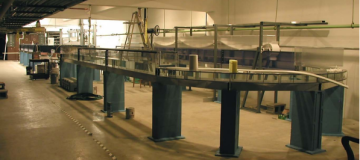
Seminario - New horizons in shale sedimentology - How experimental advances allow a new look at the rock record
Relatore: Juergen Schieber, Indiana State University (USA), Department of Geological Sciences I Martedì 16 Maggio 2023 – ore 16:30 | Aula Arduino
16.05.2023
Mud is everywhere and much of the Earth is covered by it, on land as well as under the sea. It influences what crops we can grow, how stable our landscapes are, the navigability of our rivers, harbors and canals, as well as the habitability of shelf seas and the deep oceans for benthic life and associated fish crops. Mud is the main substrate for the microbial biomass of Earth, and as such is intricately woven in with biogeochemical cycles that exert control on the composition of atmosphere and ocean.
When buried mud becomes mudstone, a fine‐grained sedimentary rock composed dominantly of clay‐sized (< 4 μm) and silt‐sized (4 ‐ 62.5 μm) particles that constitutes 2/3 of the sedimentary rock record and contains the lion’s share of recorded geologic time. For petroleum systems, mudstones are essential as source rocks and seals, and more recently also as unconventional hydrocarbon reservoirs. In contemporary petroleum geology mudstones are a key resource that we need to be able to read accurately if we are to make correct predictions about the economic viability of hydrocarbon production in sedimentary basins.
The first step towards that goal is to abandon long held notions about mud accumulation and embracing new emerging paradigms about energetic and dynamic mud transport and depositional processes. Experimental studies are the key towards that end, and they will be the focus of this presentation. We will examine key experimental studies, their functional premises and experimental outcomes, and what we learn from them about how mudstones may have formed in the past.
Parallel to this we will examine what features observable in the rock record indicate that these experiments indeed mirror key processes in mudstone transport and deposition. Out of this a conceptual framework is evolving that in the not too distant future will allow us to make predictions about the spatial distribution of the various types of mudstone facies within sedimentary basins





